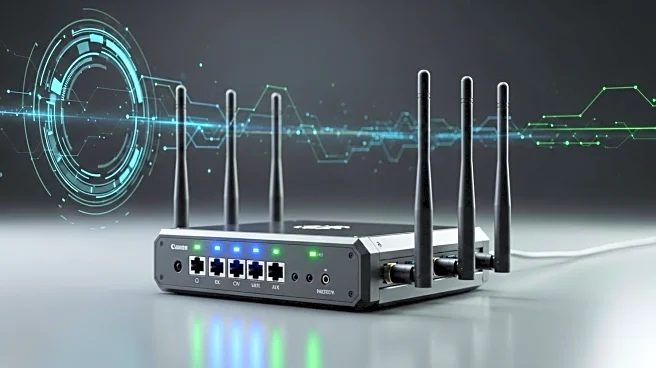What is the story about?
What's Happening?
Saab Tactical Electronics has unveiled a new tactical router designed to improve secure communications within and between armored vehicles. The router, showcased at DSEI 2025, utilizes Saab's TacEdge software and is compliant with NATO's Federated Mission Network standards. This development aims to address the need for secure communication distribution while maintaining separation between classified domains. The router can integrate various communication systems into a single architecture, facilitating tactical and sensor data sharing according to classification levels. It features a powerful central processing unit, enabling it to function as both a server and a switch, and supports smart displays running small applications. The router can be mounted directly on vehicle hulls or installed in racks, enhancing its versatility in military environments.
Why It's Important?
The introduction of Saab's tactical router is significant for military operations, particularly in coalition environments where interoperability is crucial. By enabling secure and efficient communication across different systems, the router enhances information sharing and operational coordination among allied forces. This technology could improve mission effectiveness and reduce the risk of communication breakdowns in complex military operations. Additionally, the router's compliance with NATO standards ensures compatibility with existing systems, facilitating integration into current military infrastructure. As global security challenges evolve, such advancements in communication technology are vital for maintaining strategic advantages and ensuring the safety and success of military personnel.
What's Next?
Saab is in discussions with potential customers, although no sales have been announced yet. The company may continue to refine the router's capabilities based on feedback from military stakeholders and operational requirements. As interest in secure communication solutions grows, Saab could expand its market presence and explore partnerships with defense agencies worldwide. The ongoing development and deployment of such technologies will likely influence future military communication strategies and drive innovation in secure data transmission systems.
AI Generated Content
Do you find this article useful?

















